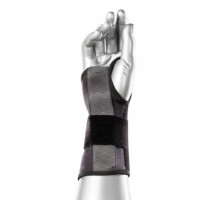-

In Stock
$18.95The BioFreeze Professional – 3 oz Roll On is a pain relief product that, when applied, causes menthol to bind with temperature sensitive receptors in the skin and produce a cold sensation to overwhelm the pain signals that would otherwise be felt.
-

In Stock
$20.95The BioFreeze Professional – 4 oz Spray is a pain relief product that, when applied, causes menthol to bind with temperature sensitive receptors in the skin and produce a cold sensation to overwhelm the pain signals that would otherwise be felt.
-

In Stock
$18.95The BioFreeze Professional – 4 oz Tube is a pain relief product that, when applied, causes menthol to bind with temperature sensitive receptors in the skin and produce a cold sensation to overwhelm the pain signals that would otherwise be felt.
-

In Stock
$72.81 – $121.41For Sale To HealthCare Professionals Only
The BioFreeze Professional – Pump Bottle is a pain relief product which, when applied, causes menthol to bind with temperature sensitive receptors in the skin and produce a cold sensation to overwhelm the pain signals that would otherwise be felt.
-

In Stock
$57.59Treatment for wrist pain, general wrist support
The Bio Skin Boomerang comfortably compresses and supports your wrist pain to help treat minor wrist problems.
-

In Stock
$59.87Wrist brace for carpal tunnel syndrome and more
The BioSkin DP2 Wrist brace is designed to the most functional and comfortable wrist brace ever sold. It boasts a thin ultra-soft layer of micro-fleece that helps moisture to migrate away from your body and keeps you cool, comfortable and dry. With its laceless design, you can easily apply the brace with one hand and its dorsal and palmar stays can be removed and re moulded by hand to customize the fit of the brace.
-

In Stock
$65.45The Bio Skin DP3 Cock-up Wrist brace is designed to the most functional and comfortable wrist brace ever sold. It boasts a thin ultra-soft layer of micro-fleece that helps moisture to migrate away from your body and keeps you cool, comfortable and dry. With its laceless design, you can easily apply the brace with one hand and its dorsal and palmar stays can be removed and re moulded by hand to customize the fit of the brace.
-

In Stock
$54.99The Bio Skin Standard Elbow Skin provides 100% coverage of elbow injuries and helps relieve pain from contusions, joint swelling and bursitis through high level compression of the entire elbow area.
-

In Stock
Rated 5.00 out of 5
$65.45The Bio Skin Thumb Spica controls movement of your CMC and MP joints and protects your thumb against painful movements in order to promote healing. It does so while allowing you full use of your other fingers. No laces!
-

Free Shipping To GTA
In Stock
$86.39Wrist brace to control motion of the CMC and MP joints
The Bio Skin Wrist / Thumb Spica regulates movement of the CMC and MP joints by preventing painful movements of the thumb and wrist but allowing unrestricted use of the fingers.










